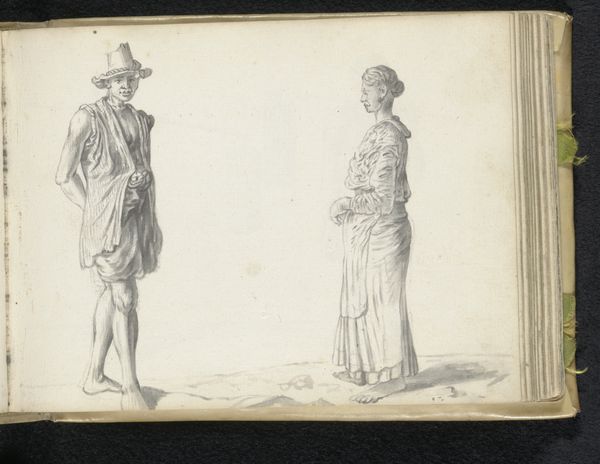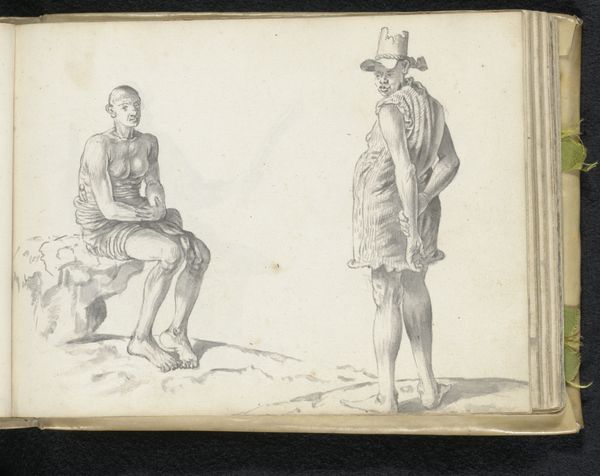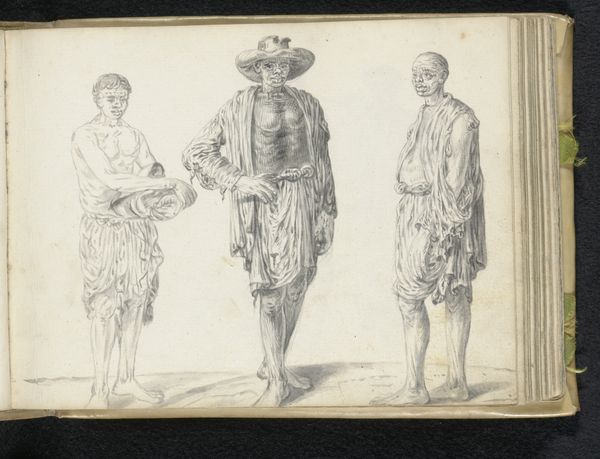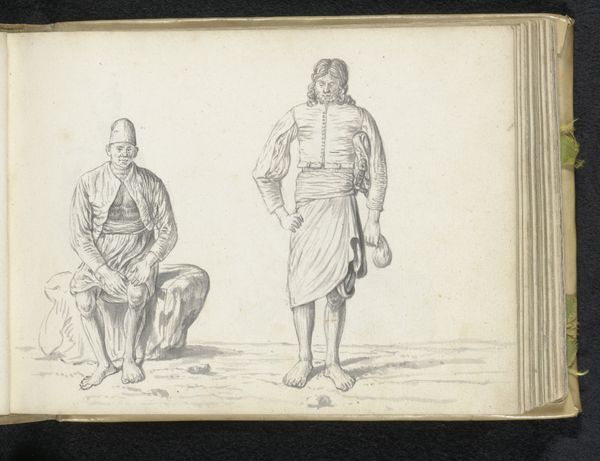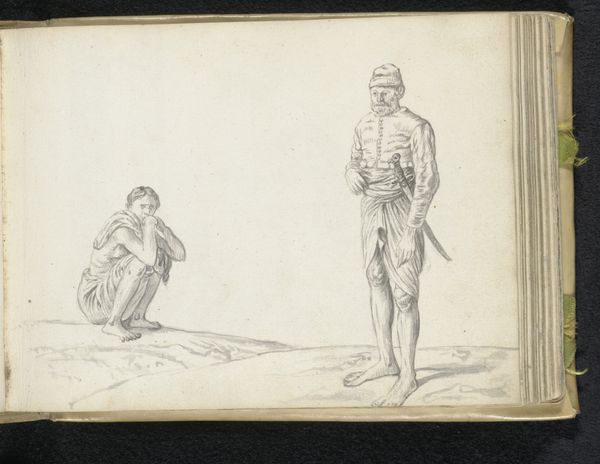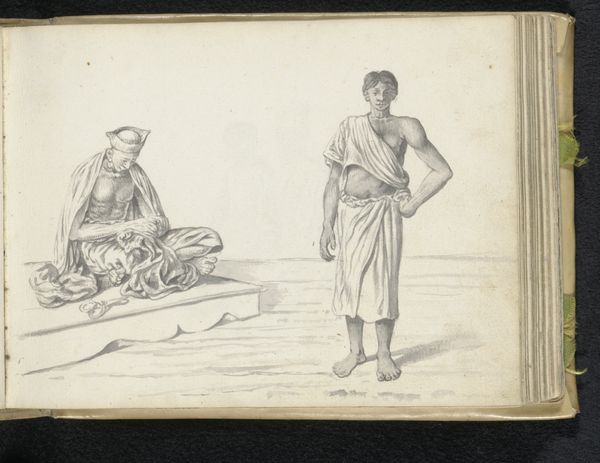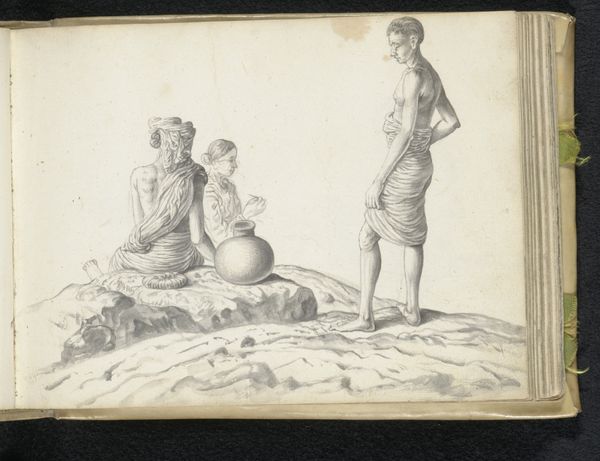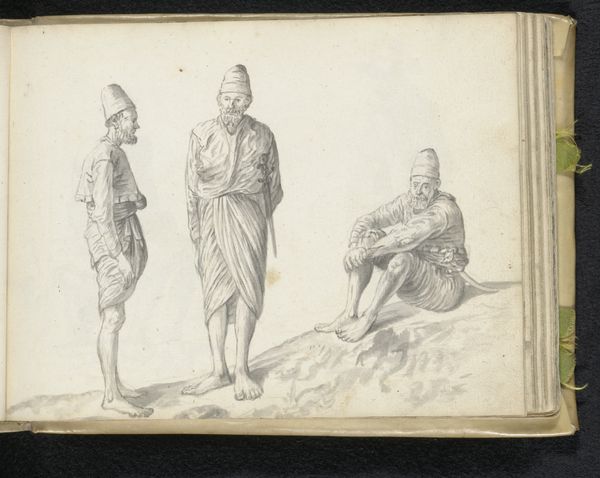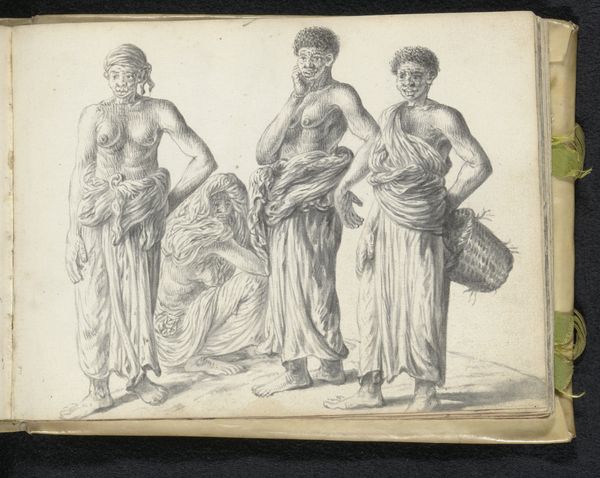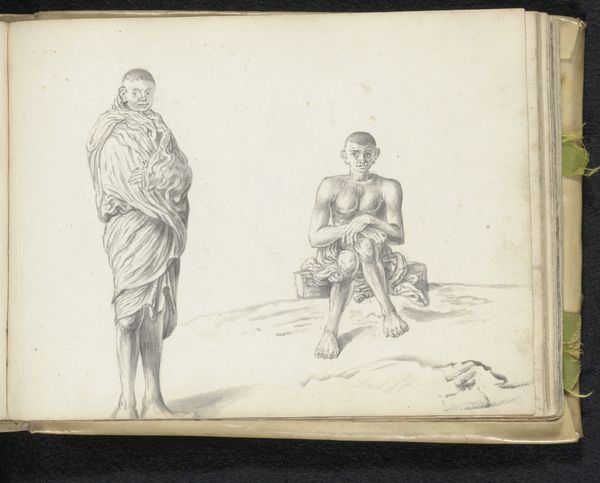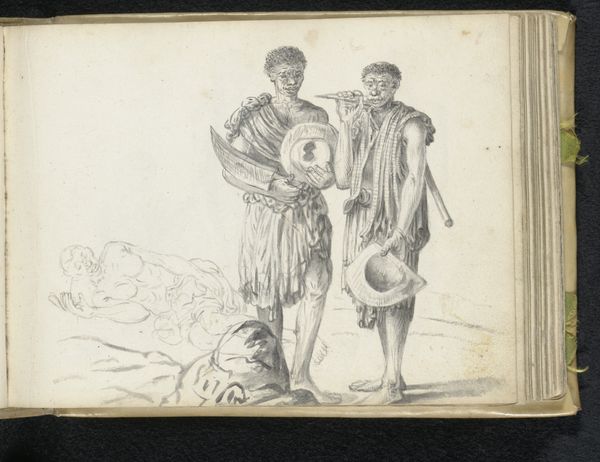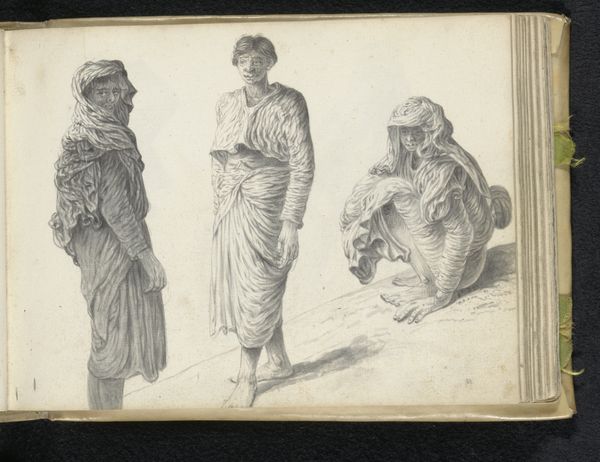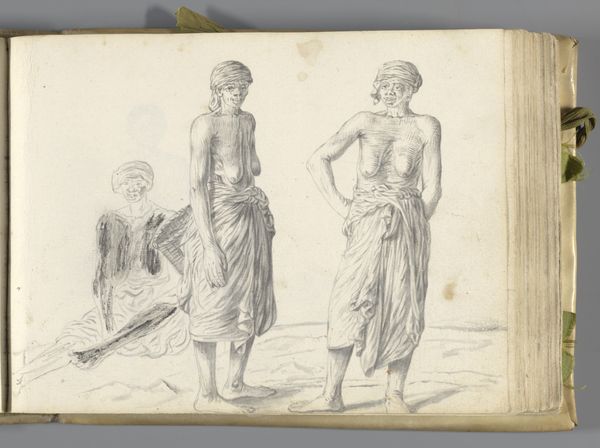
drawing, paper, pencil
#
portrait
#
drawing
#
baroque
#
figuration
#
paper
#
coloured pencil
#
pencil
#
line
#
genre-painting
Dimensions: height 148 mm, width 196 mm
Copyright: Rijks Museum: Open Domain
Editor: So, here we have "Two Sinhalese Soldiers" drawn by Esaias Boursse around 1662, in pencil on paper. It's a fascinating drawing—quite simple, yet the subjects seem proud. What do you make of it? Curator: This drawing provides a glimpse into the Dutch encounter with Ceylon (now Sri Lanka) in the 17th century. Boursse, likely working for the Dutch East India Company, created this not simply as art, but as a form of documentation, a visual record for the Dutch perspective. Consider how these images might have shaped European perceptions of colonized peoples. What details stand out to you? Editor: The differences in pose and dress are striking, especially considering they are both identified as soldiers. The seated figure seems older and carries what looks like a dagger strapped to his chest. Was Boursse aiming to depict different ranks, maybe? Curator: Precisely! Think about the power dynamics at play here. Boursse, a European artist, capturing the image of Sinhalese soldiers under Dutch colonial rule. His gaze is mediated through his cultural background, influencing what he chooses to portray and how. What message do you think this image intended to convey back in the Netherlands? Editor: Perhaps a sense of order and control, or maybe an attempt to familiarize the Dutch public with the people they were now attempting to govern. It's like a snapshot taken with a very loaded political agenda. I never would have considered the impact on Dutch society! Curator: Exactly! Seeing it as a product of its socio-political climate offers rich insights. Now you recognize art can actively shape perception and solidify a culture's views on other societies. Editor: I definitely see that now. Thanks, it's a really intriguing artwork!
Comments
No comments
Be the first to comment and join the conversation on the ultimate creative platform.
